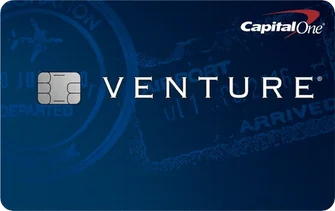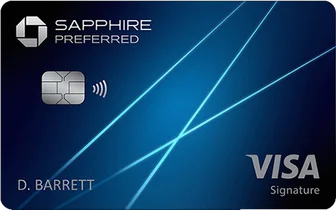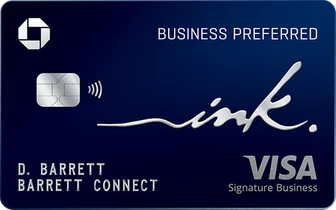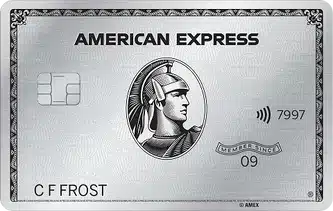This post contains references to products from one or more of our advertisers. We may receive compensation when you click on links to those products. For an explanation of our Advertising Disclosure, visit this page.
Are you looking for a new credit card in 2024? There are many factors to consider when choosing a credit card, such as your spending habits, credit score, and desired rewards. Here are some tips to help you choose a credit card that’s best for you:
- Consider your spending habits. What do you typically spend money on each month? Do you travel often? Do you shop online? Once you know how you spend your money, you can narrow down your options to cards that offer rewards in the categories you spend the most in.
- Check your credit score. Your credit score will impact the interest rates and fees you’re offered on a credit card. If you have good credit, you’ll be eligible for cards with lower interest rates and no annual fees.
- Decide what type of rewards you want. Do you want cash back? Travel rewards? Points that can be redeemed for merchandise? There are many different types of rewards programs available, so choose one that’s right for you.
- Compare different credit cards. Once you’ve considered your needs, it’s time to compare different credit cards. Be sure to compare the interest rates, fees, rewards programs, and other terms and conditions before you make a decision.
Choosing the right credit card can help you save money and earn rewards. By following these tips, you can find the best credit card for your needs.
How To Choose A Credit Card in 2024
There may be plenty to think about regarding the best choice. However, picking a good credit card isn’t difficult, whether it’s your first credit card or your 10th. Going over your spending habits, any future major purchases, and what your goals are (ex. would it be best to earn points/miles or cash back) can help you narrow down your options.
Check Your Credit Score
Your credit score is arguably the most important factor in knowing which credit scores you qualify for. This three-digit number lets banks know if you have fair, good, or excellent credit. You can use the credit score ranges below to get an idea of what credit cards you might qualify for:
- Fair credit: 580 to 669
- Good credit: 670 to 739
- Excellent credit: 740 to 850
If your credit score is below 580, you will most likely need to apply for a secured credit card like the Secured Mastercard® from Capital One. In as little as 6 months of on-time payments, you may qualify for an automatic credit line increase with no additional deposit needed. All payment activity reports to the three credit bureaus.
You will qualify for an initial $200 credit limit if you can make the minimum required security deposit. Access to an authorized bank is required to make your $49, $99, or $200 refundable security deposit. This card has no annual fee.
If you want a higher initial limit, you can make a larger deposit before your account opens. These cards require a security deposit that’s equal to your credit card spending limit.
Credit cards requiring a higher credit score tend to offer better rewards and benefits. Some of the best credit cards for travel require good to excellent credit. Even if you only have fair credit now, making on-time payments gradually increases your score so you can apply for the best cards.
Types of Credit Cards
Before you choose a credit card, it’s important to note that there are several different types of credit cards. In general, each credit card has one primary purpose:
- Earn rewards points
- Build credit
- Avoid balance transfer fees and interest
Credit cards that cater to people with low credit scores or waive balance transfer fees usually don’t earn rewards. But the banks still report each on-time payment (and late payments) to the credit bureaus to raise your credit score, so you qualify for a rewards credit card.
Compare Credit Card Fees
Also, compare credit card fees while researching your different options. Two fees you should consider besides the purchase APR are the annual fee and foreign transaction fee.
There are many cards that don’t charge an annual fee or a foreign transaction fee. If you don’t plan on international travel, focus on the annual fee. Any rewards points and credit card benefits your card offers should outvalue the annual fee. The Chase Sapphire Preferred® Card and the perks that come with it are an example of a card that is full of travel benefits, doesn’t charge for foreign transaction fees, but does charge an annual fee.
You won’t want to pay an annual fee if the card doesn’t offer rewards points or benefits just so you can improve your credit score. Depending on what your goals are, some of the best travel credit cards with no annual fees may come with everything you are looking for.
However, you shouldn’t automatically avoid credit cards with annual fees when comparing your options. It’s best to be aware of the fees when comparing the rewards programs and benefits to determine if the perks are worth the annual fee.
Earn Bonus Points on Purchases
Rewards credit cards either earn the same amount of points for every $1 spent while other cards award more points for select purchases like airfare, dining, or gas stations. If any of these are of interest, check out our picks for some of the best credit cards for travel miles, the best credit cards for dining rewards, and the best gas credit cards.
You should estimate how much you can earn from flat rewards and tiered rewards cards based on your normal purchases. Pay attention to any spending caps that can restrict how many bonus points you can earn.
Once you find the cards that make it easy to maximize your most common purchases, see which ones offer the best redemption options. After all, the best credit card must make it easy for you to earn and redeem points.
Travel Rewards or Cash Rewards?
You will need to decide if you want to earn travel rewards, cash rewards, or both. Most credit card points are worth 1 cent each but might have a lower value for a certain award type. That means you must redeem 100 points for every $1 in rewards.
But some of the best rewards credit cards might require more than 100 points per $1 for cash rewards. And cash rewards cards might require more than 100 points per $1 for booking award travel.
In general, redeeming points for award flights directly from the airline is the easiest way to make each point worth at least 1 cent. For example, redeeming 15,000 points for a $284 flight makes each point worth 1.89 cents. You would need to redeem 28,400 points to get a $284 statement credit or booking through the credit card’s travel booking tool.
Some of the best cash-back credit cards redeem each point at 1 cent each for monthly statement credits or bank account deposits. Although you have a lower redemption value than many travel rewards cards, this can be a better option if you do not travel regularly and want to redeem your rewards on a monthly basis.
Additional Card Benefits
Credit cards with an annual fee are more likely to offer more benefits. Usually, you get more perks when you pay a higher annual fee.
Some of the best airline credit cards usually offer free checked baggage, priority boarding, and maybe even lounge passes.
Hotel credit cards offer upgraded loyalty program status. Some even offer free night certificates which can easily be worth more than the annual fee. Check out our post on the best credit cards with free hotel nights for more info.
Cash rewards cards usually don’t offer extra card benefits. However, they are less likely to charge an annual fee.
Compare Welcome Offers
Most credit cards that require good or excellent credit offer one-time signup/welcome bonuses for new card members. When comparing near-identical credit cards, the bonus offer might be the deciding factor for which card you apply for. Here are some of the best credit card offers.
It’s not uncommon for banks to waive the annual fee for the first year on many cards. You might also get a 0% introductory APR on balance transfers and purchases for the first 12 months.
Are You Ready to Choose a Credit Card?
The CardMatch™ tool lets you quickly see which credit cards you have the best odds for. After seeing your options, you can compare the rewards programs, additional card benefits, and credit card fees.
It’s a good idea to wait for at least 3 to 6 months between applications if you plan on applying for more than one card. This waiting period gives you enough time to qualify for any signup bonus and establish a positive payment history.
Waiting can also increase your credit score and reduces the risk of having your subsequent applications declined for having too recent applications.
Summary of How to Choose a Credit Card
It’s easy to choose a credit card when you compare the card features that are most valuable to you. Good starting points include purchase rewards, redemption options, and additional benefits. These perks help you maximize each purchase while improving your credit score so you can potentially upgrade to better cards.
Related Articles:







